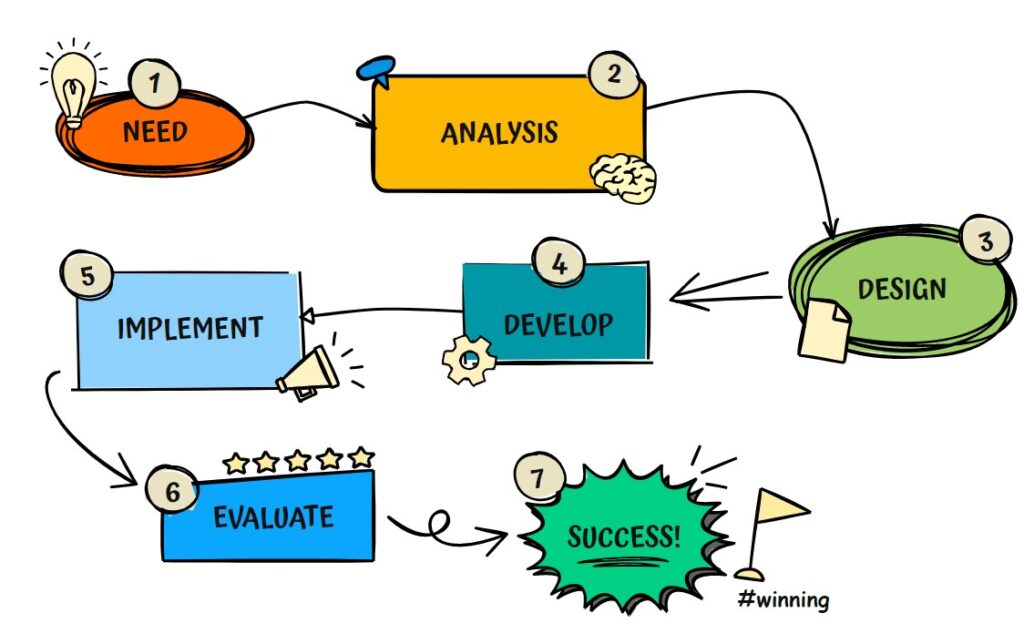I’ve always written training in detail, because when I started in L&D I was part of a team and it was expected that that (with a few exceptions) all of us could deliver everything, and it needed to be consistent between people and over time. As my career moved on, I focused on design rather than delivery so always designed with the expectation that someone other than me would be delivering.
In this blog, I explain why it’s a good thing – even if you’re designing for yourself. In the follow up, I’ll share some tips for designing in detail.
But it’s not just me who believes that detailed design matters: The ADDIE model of training design has 2 D’s for a reason. The first D is top-level design (or scoping) and the second is development (or detailed design).

So, here’s why should always design your training in detail.
- It’s mental practice. When you design in detail you mentally go through the course in a more detailed way than if you were just planning it. This makes it easier to deliver (OR if you aren’t going to be running it, it allows you to put yourself in the facilitators shoes).
- It’s more realistic. When you actually write everything out, you’re less likely to try and cram too much in as you are listing EVERYTHING that you will cover, not just the top-line topics.
- You can check flow. Can you easily write a sentence that links one section to another? If not, how will you make that link in the training session?
- You can check balance. When you specify exactly where activities will come (and detail the TYPE of activity) it’s easy to see if you need to change pace, add in more variety, or give more (or less) input.
- You can assess your activities. By writing out exactly how you will run activities (and what you hope they will bring out in terms of learning points) you can check they will work before you are live with a group. If there are any concerns, you can have an alternative ready to go.
- You can check timings. When you write all the things you want to share, the questions you are likely to ask and how activities will be run, it’s much easier to assign realistic timings.
- It cuts your prep time enormously. Even if you run the course 3 years after it was originally written, you can run it within minimal notice. You won’t waste ages wondering what you meant by that comment or which video you are supposed to refer to. It’s all there.
- In time, it cuts your design time. Having detailed session notes that can be adapted will make the design of new sessions easier.
- It gives your key stakeholders confidence. Showing your senior leaders or clients a detailed session plan illustrates that you’ve properly thought it through and won’t just wing it on the day. As much as you may want to be spontaneous and responsive, it still makes most senior people in organisations nervous.
- It allows for substitution. Even if you are freelance, you may need to ask someone to stand in for you at short notice. How can you possibly do that without a detailed session plan?
